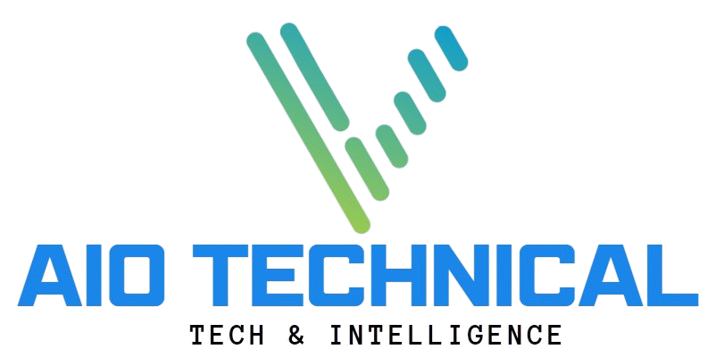Manual to Machine : A Comprehensive Guide to Automation Transition

Introduction : Manual to Machine
The transition from manual processes to automated systems, often referred to as “Manual to Machine,” represents a pivotal shift in how industries operate. Automation has revolutionized workflows, boosting efficiency, reducing human error, and enhancing productivity. In this article, we will explore the key aspects of this transformation, including safe methods, legal considerations, and best practices to ensure a smooth transition. Whether you’re considering automating repetitive tasks or optimizing complex operations, understanding the journey from manual methods to automated machinery is essential.
The Shift from Manual to Machine: Why Automation Matters
The shift from manual to machine-based operations has become crucial in industries ranging from manufacturing to healthcare. Companies are embracing automation to streamline workflows, cut costs, and increase overall output. By transitioning from traditional, labor-intensive methods to automated systems, organizations can achieve higher efficiency and accuracy. The goal of this shift is not just to replace human labor, but to augment it, allowing employees to focus on more strategic, value-added tasks.
Benefits of Automation in Different Industries : Manual to Machine
Automation’s impact varies across industries, but its primary goal remains consistent: to reduce the need for manual intervention and improve productivity.
- Manufacturing and Production: In manufacturing, automation has led to increased production speed, precision, and reduced waste. Machines can perform repetitive tasks with higher accuracy, ensuring consistency and quality control.
- Healthcare: Automation in healthcare improves accuracy in diagnostic procedures, enhances patient care, and reduces administrative burdens. For instance, robotic surgery systems have transformed surgical precision, improving outcomes for patients.
- Logistics and Supply Chain: Automation in logistics, such as automated warehousing systems and robotic forklifts, enhances efficiency by minimizing manual labor, reducing errors, and optimizing inventory management.
Cost Efficiency and Productivity Gains
One of the primary drivers behind the transition from manual to machine is cost efficiency. Automating repetitive tasks leads to significant reductions in labor costs, as machines can perform the same task consistently without the need for breaks or rest. Moreover, automation enhances productivity by handling larger volumes of work in less time.
For instance, companies that have adopted automated manufacturing lines have reported a substantial increase in output, often with fewer resources required. This not only reduces operational costs but also contributes to overall business growth.
Key Considerations When Transitioning from Manual to Machine
While the benefits of automation are clear, the transition requires careful planning, implementation, and adherence to certain considerations to ensure success.
Safety and Training
One of the most critical aspects of moving from manual to machine-based operations is ensuring worker safety. Automated systems can introduce new risks, especially if not managed properly. Employees must receive training on how to interact with automated systems safely.
- Employee Training: Ensuring that workers are well-versed in how automated machinery operates is essential. Proper training reduces the likelihood of accidents and ensures workers remain productive even when collaborating with machines.
- Safety Protocols: Establishing safety protocols, such as protective barriers, machine safeguards, and emergency shutdown procedures, is vital to maintaining a safe working environment.
Legal and Regulatory Considerations
The transition from manual processes to machine-based systems must comply with applicable laws and regulations. Different industries may have varying requirements, but common areas of focus include data protection, labor laws, and workplace safety standards.
- Data Protection: With automation often involving increased data collection, businesses must ensure compliance with data privacy regulations such as GDPR or CCPA. Secure handling of sensitive data is essential to avoid legal pitfalls.
- Labor Laws: Automation may impact labor laws, particularly regarding employment terms, worker rights, and job displacement. It’s essential to stay updated on these regulations and work with legal experts to ensure compliance.
Integration and System Maintenance
Successfully transitioning from manual to machine-based operations requires seamless integration of automated systems. The goal is not just to install new machines, but to ensure they integrate effectively into existing workflows.
- Integration: Automated systems should be designed to complement human labor rather than replace it entirely. For instance, collaborative robots (cobots) can work alongside human workers, enhancing productivity while maintaining the human touch for certain tasks.
- Maintenance: Regular maintenance of automated systems is essential to ensure optimal performance and longevity. Proper upkeep helps prevent breakdowns and minimizes downtime, ensuring continuous productivity.
Best Practices for Smooth Automation Transition
Implementing best practices ensures that your journey from manual processes to machine-based systems is efficient and effective.
Start Small and Scale Gradually
For businesses new to automation, starting small and gradually scaling operations is a safer approach. Identify low-risk areas that can benefit from automation before expanding to more complex processes.
- Pilot Projects: Begin with pilot projects in specific departments or workflows to test the effectiveness of automation. Gathering feedback and data from these trials will help fine-tune the implementation strategy.
- Scalability: Once proven successful, expand automation to other areas. Scaling ensures you don’t overwhelm your workforce or disrupt operations.
Focus on Employee Involvement
Successful automation transitions rely heavily on employee buy-in and involvement. Employees who are part of the automation journey are more likely to adopt new technologies.
- Encourage Collaboration: Automation works best when humans and machines collaborate. Encourage team members to provide feedback and insights on how automated systems can complement their roles.
- Change Management: A structured approach to change management, including clear communication, training, and support, ensures that employees feel prepared and confident in using new technologies.
Continuous Improvement and Upgrading : Manual to Machine
Automation is not a one-time implementation but a continuous process of improvement. Regularly evaluating and upgrading automated systems ensures they remain relevant and effective.
- Feedback Loops: Establish feedback loops to monitor performance and identify areas for improvement. Continuous improvement helps optimize productivity and reduces the need for costly overhauls later.
- Technological Upgrades: Keeping systems updated with the latest advancements ensures your automation remains competitive and aligned with industry standards.
Conclusion
The transition from manual processes to machine-based operations, often referred to as Manual to Machine has become a fundamental shift in industries worldwide. By understanding the benefits, safety considerations, legal implications, and best practices associated with automation, businesses can successfully navigate this transition. At V Aiotechnical.com, we are committed to providing valuable insights and solutions to help organizations embrace automation while maintaining efficiency, safety, and compliance. Embracing automation not only enhances productivity but also opens new doors to innovation and growth.





